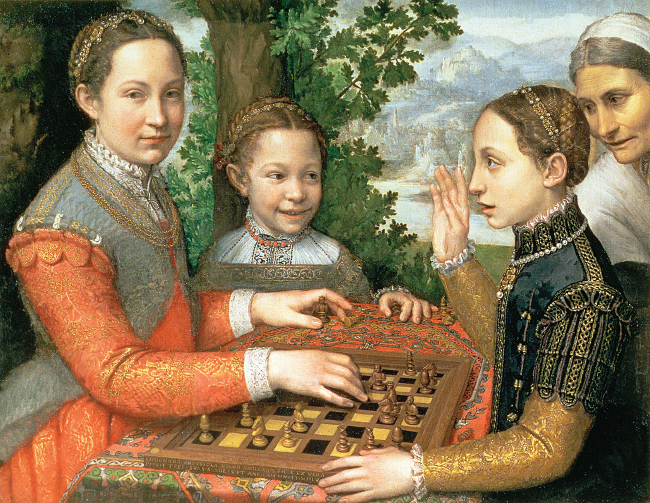Understanding World Societies:
Printed Page 426
Art and the Artist
No feature of the Renaissance evokes greater admiration than its artistic masterpieces. In Renaissance Italy wealthy merchants, bankers, popes, and princes spent vast sums to commission art as a means of glorifying themselves and their families. Patrons varied in their level of involvement as a work progressed; some simply ordered a specific subject or scene, while others oversaw the work of the artist or architect very closely.
As a result of patronage, certain artists gained great public acclaim and adulation. In the Middle Ages, people believed that only God created, albeit through individuals, and artistic originality was not particularly valued. By contrast, Renaissance artists and humanists came to think that a work of art was the deliberate creation of a unique personality, of an individual who transcended traditions, rules, and theories.
In terms of artistic themes, religious topics remained popular among both patrons and artists. As the fifteenth century advanced and humanist ideas spread more widely, classical themes and motifs figured increasingly in painting and sculpture. Classical styles also influenced architecture, as architects designed buildings that featured arches and domes modeled on the structures of ancient Rome.
The individual portrait emerged as a distinct genre in Renaissance art. Rather than reflecting a spiritual ideal, as medieval painting and sculpture tended to do, Renaissance portraits showed human ideals, often portrayed in a more realistic style. The Florentine sculptor Donatello (1386–

In this oil painting, the Italian artist Sofonisba Anguissola (1532–
In the late fifteenth century the center of Renaissance art shifted from Florence to Rome, where wealthy cardinals and popes became active patrons of the arts. To meet this demand, Michelangelo Buonarroti (1475–
In both Italy and northern Europe most aspiring artists were educated in the workshops of older artists. By the later sixteenth century formal academies were also established to train artists. Like universities, artistic workshops and academies were male-
Women were not alone in being excluded from the institutions of Renaissance culture. Though a few talented artists such as Leonardo and Michelangelo emerged from artisanal backgrounds, most scholars and artists came from families with at least some money. The audience for artists’ work was also exclusive, limited mostly to educated and prosperous citizens. In general a small, highly educated minority of literary humanists and artists created the culture of and for a social elite. In this way the Renaissance maintained, and even enhanced, a gulf between the learned minority and the uneducated multitude.
>QUICK REVIEW
Who were the humanists, and what did they believe in?